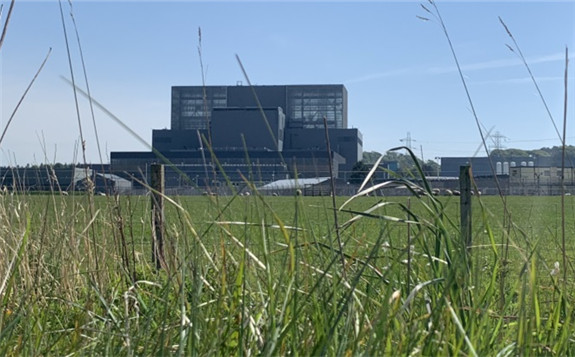
Construction of the Hunterston B plant began in 1968, with power generation at Reactors 3 and 4 starting in February 1976 and March 1977, respectively. (Reactor 3 is also known as Hunterston B unit 1 and Reactor 4 as Hunterston B unit 2.) In 2012, operator EDF Energy extended the generating life of the plant to March 2023, with a two-year proviso either side of that date.
Reactor 3 and Reactor 4 were taken offline on 9 March and 3 October 2018, respectively, after cracks in their graphite cores were discovered during routine inspections. In August 2020, the UK's Office for Nuclear Regulation (ONR) gave approval to EDF to restart Reactor 4 in August 2020 and Reactor 3 the following month.
"Since the reactor returned to service in September 2020 from its extended outage, [Reactor 3] has had one of its best operating runs, experiencing no unplanned outages," said Station Director Paul Forrest. "The exceptional performance of the unit to the end of its generating life is testament to the hard work and dedication of the people who work at the site."
The reactors were taken offline earlier this year for further inspections of their graphite cores. In April, the ONR gave permission for the units to be switched back on if inspection results were as expected. However, it said continued operation would be for up to a total of 16.7 terawatt days for Reactor 3 and 16.52 terawatt days for Reactor 4 - about six months of operation for each reactor. Reactor 3 returned to service on 23 April and Reactor 4 on 5 June.
"The people here at Hunterston B are massively proud of the work they do. Every one of them has played a part in the success of the station and in supporting Reactor 3 generate enough zero-carbon electricity over its lifetime to power every home in Scotland for 15 years," Forrest said. "While we will pause to reflect on this milestone, we are looking forward to the future. We will focus our efforts on the final six weeks of generation from Reactor 4 and ensuring the site is ready to start defuelling after that."
Once Hunterston B stops generating power, EDF will take on the next task of defuelling the station, which is the first stage of the nuclear decommissioning process. Preparations for defuelling have been under way for a long time, EDF said, and the process is expected to take a few years to complete.
In June, the UK government and EDF agreed improved arrangements to safely and efficiently decommission Britain's seven AGR nuclear power plants that are scheduled to reach the end of their operational lives this decade. The plants are Torness and Hunterston B in Scotland, Dungeness B in Kent, Hartlepool in Teesside, Heysham 1 and 2 in Lancashire and Hinkley Point B in Somerset. The agreement came shortly after EDF announced that it had decided not to restart the first of the AGRs, Dungeness B, and instead move it into the defuelling phase with immediate effect.
The Hunterston A plant comprised two Magnox reactors capable of generating 180 MWe each. Hunterston A Reactor 1 began power generation in February 1964, with Reactor 2 following in June that year. Reactor 2 shut down on 31 December 1989 and Reactor 1 on 31 March 1990.